 Lily
LilyIt’s my first trip to Sri Lanka—how should I get around once I’m there?”



Are you feeling unsure about that?
Sri Lanka offers a variety of transportation methods, but in a foreign country where you’re unfamiliar with the area, figuring out how to use the trains or buses—the fares, the safety, etc.—can be utterly confusing.
In this article, we cover all the major ways to get around Sri Lanka and compare the pros and cons of each.
Speech bubble: “Cutting to the chase, if you’re on a short trip, hiring a private taxi charter with a driver is the most comfortable, safe, and efficient way to travel.”
We’ll thoroughly explain everything from trains, buses, tuk-tuks (three-wheel taxis), taxi-hailing apps, to private car charters. In the end, we’ll discuss why we recommend taxi charters.



You can even plan a flexible itinerary—say, take the scenic tea country train for part of the journey and use a taxi charter for everything else!
Alright, let’s jump into the details.
Sri Lanka Travel Basics: Distances, Travel Times & Road Conditions
Sri Lanka is an island nation about 0.8 times the size of Japan’s Hokkaido. On a map it might look small, but the main tourist destinations are scattered all over the island, and the distances between them are actually quite significant.
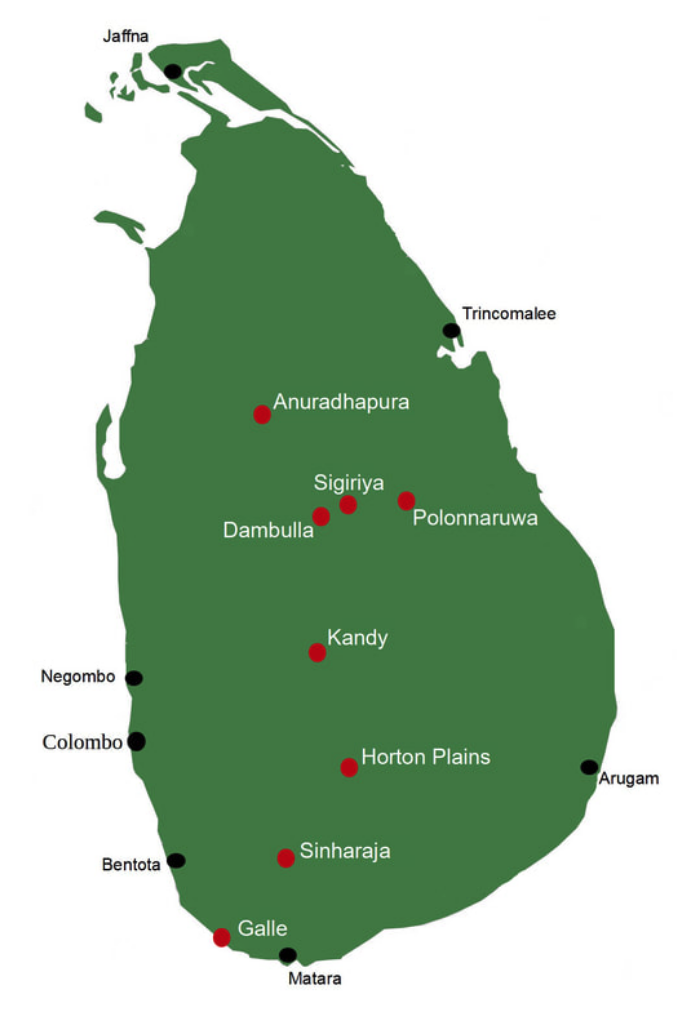

Furthermore, infrastructure and terrain add to the challenge. Even though some expressways have been built in recent years, most areas still rely on winding local roads and mountain roads, with a mix of buses, trucks, tuk-tuks, etc., all jostling for space – traffic jams happen frequently.
In rural or hilly regions, vehicles can’t go fast due to road conditions and curves, so travel requires time and patience.
For example, Colombo to Kandy (about 120 km) takes around 3 hours by air-conditioned bus, but even the express train takes 2.5–3 hours, and a regular train can take over 4 hours. In steep mountain areas, Sri Lankan trains move so slowly that locals joke it’s “like a snail.”
Road conditions are similar – even on main highways, overtaking and cutting in are everyday occurrences. Locals often joke that what’s needed is “good horn, good brakes, and a lot of luck.” Realistically, it’s extremely difficult for a first-time visitor to drive themselves here.
Safety is also a critical concern. Japan’s Ministry of Foreign Affairs officially cautions travelers to “ensure you secure safe transportation” when moving around Sri Lanka. In particular, for late-night travel or using public transit, you must be vigilant against pickpockets, bag-snatchers, and scams (the U.S. State Department even warns that local public buses are not recommended for safety).
Time is money—and in this case, spending a bit more to secure reliable transportation will make your trip safer and much more comfortable.
With that in mind, consider your travel priorities: do you “want a cheap, adventurous experience” or “prefer to spend a bit more for efficiency and safety”? Next, we’ll delve into each mode of transport in detail, including practical tips and real experiences.
Traveling by Train (Scenic Railway Journeys)
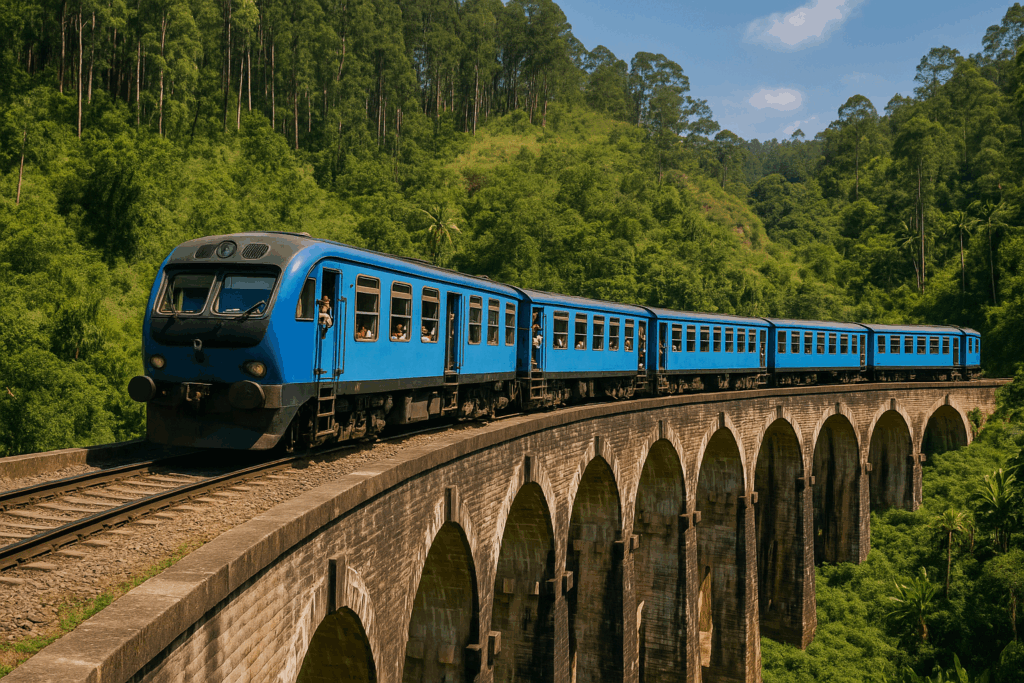

| Merits | Demerits |
|---|---|
| Ultra-low fares: Even long-distance routes cost only a few hundred rupees, making it extremely budget-friendly.Beautiful scenery: Numerous spectacular routes through the highlands and along the coast let you enjoy “traveling = sightseeing” in itself.Higher classes available: First- and second-class cars have reserved seating and are relatively comfortable. | Unreliable schedule: Trains are routinely delayed (by hours), so trips take a long time.Crowding & fatigue: Third-class cars are always packed with hard bench seats – exhausting for long rides. Pickpockets: Reports of theft on crowded trains, so vigilance is required. |
Sri Lanka’s railways (Sri Lanka Railways) still use the network built during 19th-century British rule, connecting Colombo with major cities and tourist areas. The network isn’t very extensive, but the slow, gentle train rides are full of old-world charm. In particular, the highland train journey is extremely popular.
The route from the historic city of Kandy, through the tea country of Nuwara Eliya, to the mountain resort of Ella is one of South Asia’s most breathtaking train segments — often called “the world’s most beautiful train ride.” This stretch is even nicknamed the “Tea Train” section!
Endless green tea plantations fill the windows, majestic valleys spread out below, and as shown in the photo, the train crosses the beautiful Nine Arch Bridge (Bridge in the Sky). Scene after postcard-worthy scene unfolds outside, ensuring you’ll never be bored.
On slow sections of track, you can lean out the window to feel the breeze, or wave to local children along the line — the journey itself can become one of your most memorable experiences.
Also recommended is the coastal railway line heading south from Colombo toward Galle and Matara. This refreshing route runs with the blue Indian Ocean on your side, and it’s popular for touring between beach resorts.
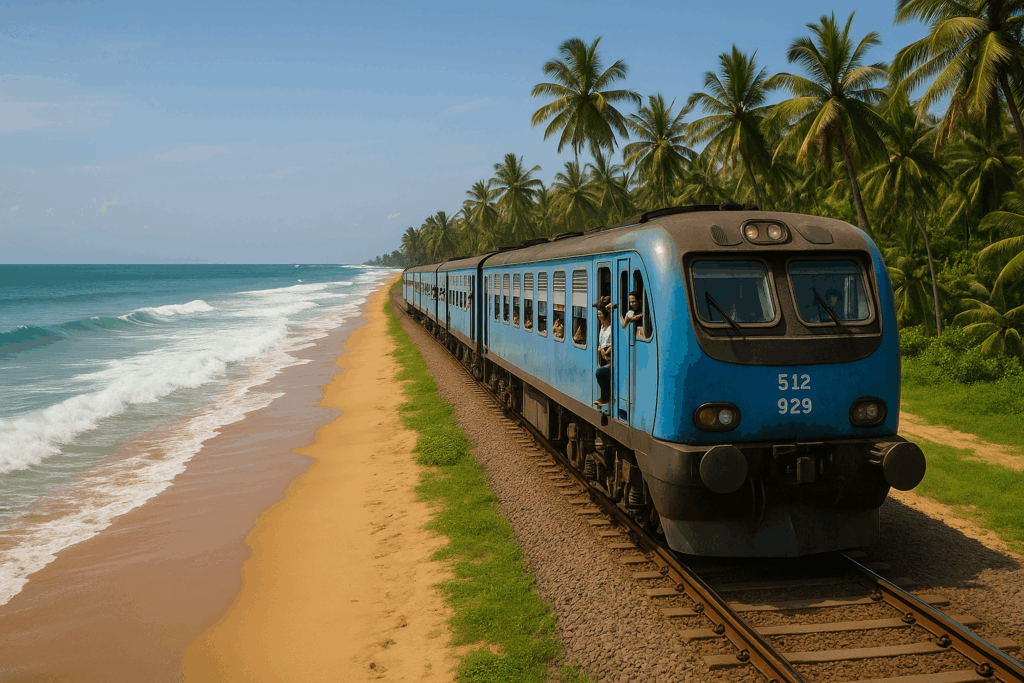

Cost: Train fares are incredibly cheap — even long distances are shockingly affordable. For example, Colombo to Kandy (about 120 km) costs around 180 LKR (≈$0.5) in third class, and even first class is only about 500 LKR (≈$1.6).
Most main lines have three classes of seats. First class is all reserved seating, often air-conditioned, and some trains even have observation or sleeper cars. Second class (on reservable express trains) also offers reserved seats, with a bit of cushioning for comfort.
On the other hand, third class is unreserved, usually wooden benches, and always jam-packed with commuters and students. Riding in third class for hours is very tiring, so if you care about comfort, grab a first- or second-class reserved seat as early as possible.
Reserved tickets go on sale 30 days before departure at major station counters, and can also be booked by phone or via Sri Lanka Railways’ official online booking site (note: the official online system adds ~5% fee). In recent years, booking sites like 12Go offer proxy ticket purchase services as well. During peak seasons or for the popular highland train, seats often sell out right after reservations open, so be sure to book early.
The downside of trains is that they do not run on time. Delays are routine — being 1–2 hours late is not unusual. Especially if you board mid-route, delays accumulated earlier can make arrival times totally unpredictable.
Additionally, in unreserved cars a fierce “seat grab battle” unfolds when boarding. If you have big luggage, you might find the vestibules and aisles packed with people to the point you can’t move.
Trains sometimes even change platforms last-minute before departure, so you can’t relax while waiting. Stay alert — ask those around you “Is this the train to ___?” to double-check, and be ready to adapt.
Also beware of pickpockets and luggage theft on trains. In crowded cars, there are reports of backpacks being unzipped or bags snatched from overhead racks. Keep valuables on you, and never lose sight of your big bags.
All in all, Sri Lankan trains are best described as a transport mode for “experience over efficiency.” If you have time and want to make enjoying the journey itself a goal, definitely consider the train.
However, if your schedule is tight, mix in buses or cars and plan for delays. Sri Lanka rail travel isn’t straightforward, but if you manage to pull it off, it can become an unforgettable highlight of your trip.
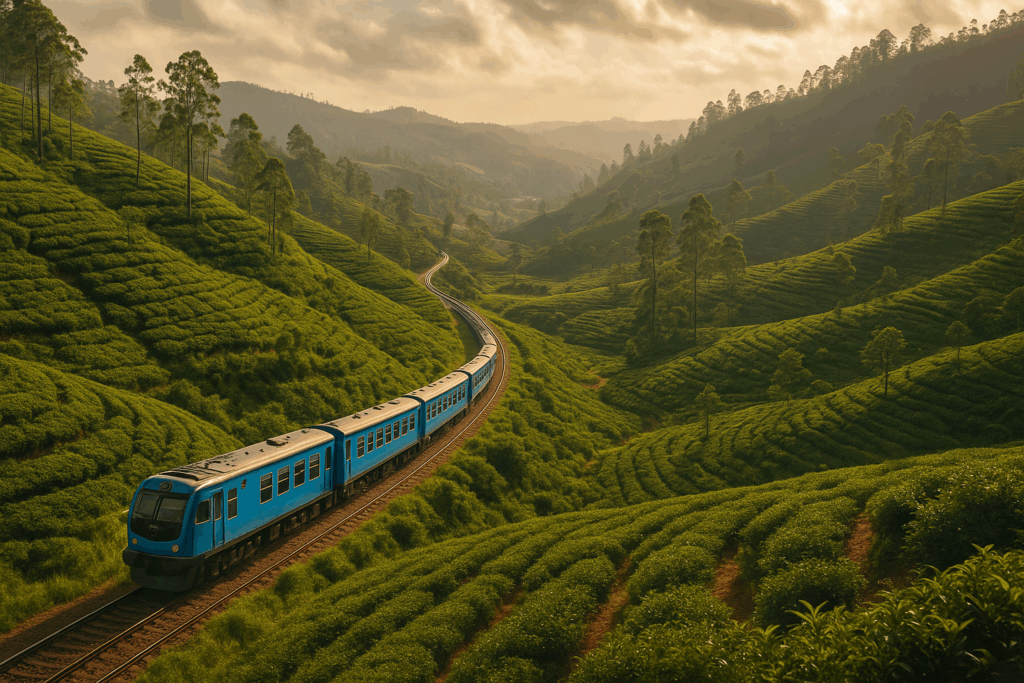

(By the way, some travelers want to ride the train only on famous segments like the Tea Train, and use a car for the rest. We’ll explain how to do that later on.)
Using a Taxi Charter (Private Car with Driver)
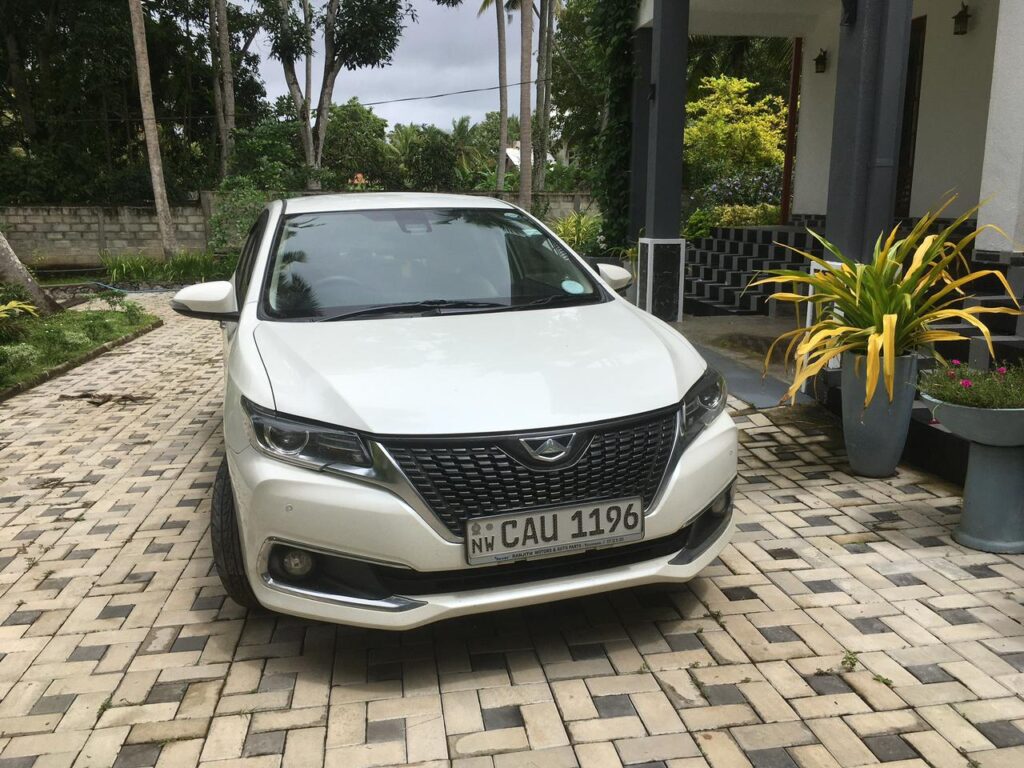

| Merits | Demerits |
|---|---|
| Outstanding efficiency: Go wherever you want, whenever you want — minimal wasted time.Comfortable & safe: Dedicated, air-conditioned vehicle; secure for luggage.Japanese support: Some companies cater to Japanese travelers, so even first-timers can feel at ease. | Higher cost: More expensive than other transport (though splitting it among a group lowers the per-person cost).Driver selection: You need to choose a trustworthy company/driver. |



One of the most popular options among tourists in Sri Lanka is the taxi charter – hiring a private car with a dedicated driver.



This is essentially a car charter, where you arrange a private vehicle + driver for the duration of your trip, allowing you to ride as much as you want and be taken anywhere you like during your stay. To efficiently visit major sights, nothing beats this flexibility – the time and energy saved are tremendous.
For example, something nearly impossible with public transport – like visiting three separate UNESCO World Heritage Sites in one day – can be done with a chartered car that takes you around from morning till night. You’re free to stop by any interesting shop along the way, or even change destinations on the fly.
You can also leave your luggage in the car at all times, so you’re free to sightsee unencumbered. During transfers you can rest or even nap in the car. It’s essentially your own private tour taxi, which is ideal for travelers who want to see a lot in a short time.
Now, you might wonder about the cost of hiring a charter. It depends on vehicle type and plan, but generally the going rate is around $80–$100 per day. At first glance, you might think “that’s expensive.”
But consider: in Japan, a taxi’s initial fare is $5〜$7, but hire one for an entire day and it’ll cost several hundred dollars.



In Sri Lanka, by contrast, you get a car with a driver at your disposal from morning until night for that price.



Of course, multi-day chartering means covering the driver’s meals and lodging too, but the fact that all of that is included in this price range is a perk unique to a developing country!
What’s more, if 3–4 people share the car, it comes out to only around $20 per person per day. There are even comments that for long-distance travel, with enough people a charter can work out cheaper per person than taking the bus + train.
When you book a charter, typically all necessary expenses are included in one flat rate – this usually covers the driver’s food and accommodation, highway tolls, fuel, etc. (Always confirm in advance with a quote.)
You won’t be hit with surprise charges, so you can use the service with peace of mind. And if your plans change and you want to alter the route, a private car can adjust flexibly – even “I’d like to make a quick detour” wishes can be granted.
Having essentially “your own personal driver” is a real luxury, and it can dramatically boost your trip satisfaction.
If we must name a downside, of course the cost is higher than other means. However, as I’ve emphasized, it’s still far cheaper than hiring a car and driver in Japan, and considering the benefits (safety, comfort, time saved), it’s well worth it.
Another huge plus is that you, the traveler, don’t get tired out during transit, meaning even on a packed schedule you can focus your energy on sightseeing. That peace of mind and efficiency is invaluable.
While you can rent a car in Sri Lanka and drive yourself, note that you need to obtain a local permit in addition to an international driving permit, and the road environment is vastly different (and dangerous). Even locals unanimously say “visitors should hire cars with drivers,” so to avoid trouble it’s safest to leave the driving to a pro.
Lastly, for first-time visitors to Sri Lanka, or those traveling with small kids or elderly family, we strongly recommend using a taxi charter to get around, even if it costs a bit more.



Being freed from the worry and stress of unfamiliar public transportation, and being able to use your limited time effectively—there’s nothing more valuable than that, right?
In fact, many Foreign travelers in recent years have taken advantage of chartered cars in Sri Lanka. There’s plenty of positive feedback: “We could leave all our luggage (and worries) in the car and just enjoy sightseeing,” “Our driver suggested an efficient plan to cover all the scenic spots,” and so on.
So, how exactly do you arrange a taxi charter car?
There are a few charter service companies in Sri Lanka geared toward Japanese travelers. Among them, the most popular is “Sri Lanka Taxi Charter Service,” which is operated by Japanese staff.
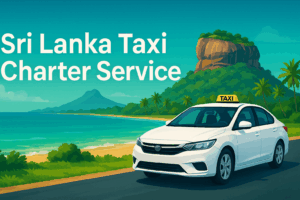

This related article covers the features and advantages of Sri Lanka Taxi Charter Service in detail.
Sri Lanka Taxi Charter Service carefully vets only government-licensed drivers.
It’s also budget-friendly, boasting the lowest flat rates in the industry.
For example, the standard plan costs below.
| Days | Charter Fee (USD) |
|---|---|
| 2 days | $255 |
| 3 days | $345 |
| 4 days | $400 |
| 5 days | $500 |
| 6 days | $580 |
| 7 days | $680 |
| 8 days | $760 |
Note: A van for 3+ people is +$20/day; adding a licensed tour guide is +$10/day
These flat rates cover unlimited mileage with no extra charges — highway tolls, driver accommodations, etc., are all included. The company even guarantees the lowest price (they promise they won’t be undersold by competitors), showing their confidence in the value offered.
For instance, a family of four chartering a car for 5 days would cost $600 total with an English-speaking driver (including the large-van surcharge). (Basic+$500 + Van surcharge+$20×5days)
Thanks to such comprehensive service, Sri Lanka Taxi Charter Service earns high praise from users. Many travelers report, “Even though it was our first trip to Sri Lanka, we felt safe and taken care of the whole time,” and “With a Japanese-speaking driver, we could communicate all our detailed requests easily.”
If you’re interested, you can easily inquire via their official website. Do give it a try. When time is limited and you want to experience as much of Sri Lanka as possible, arranging a reliable charter service in advance is the smartest route in terms of time, cost, and peace of mind.
→ Visit the Sri Lanka Taxi Charter Service official page for more details.
Column: Enjoying the Tea Train and a Taxi Charter for a Perfect Trip!



I mostly want to travel by taxi charter, but I do want to ride the tea country train for that one segment!



We can accommodate that kind of request with a taxi charter, no problem!
The greatest appeal of a taxi charter is that, being a private hire, you can structure your itinerary as flexibly as you like. For example, let’s say you want to experience just the famous “Kandy–Ella” tea train portion of the trip.
In that case, simply have your charter driver drop you off at Kandy Station and arrange to pick you up at Ella Station after your train ride.
Moreover, a driver who knows the area well can even handle buying your train tickets for you!



That’s a huge help! There are many times when travelers have no idea how to get a ticket.
Whether you want to ride a train for part of the journey, or try things like an Ayurveda retreat or a safari, a taxi charter is extremely handy. With a dedicated driver and car at your disposal, you can enjoy your Sri Lanka trip to the fullest.
Using Ride-Hailing Apps (Uber & PickMe)
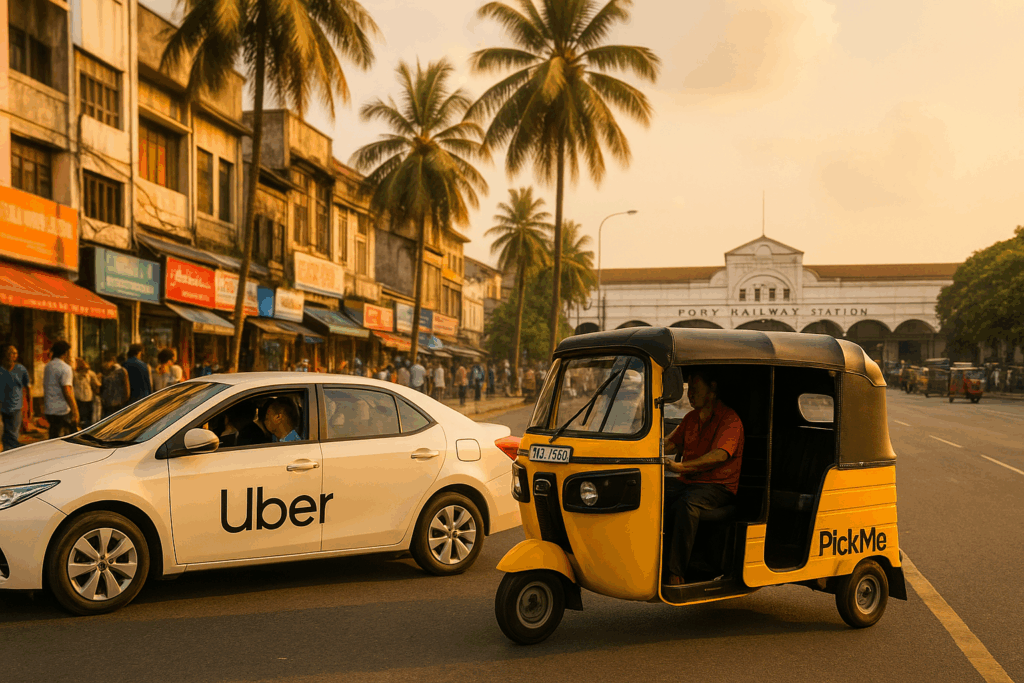

| Merits | Demerits |
|---|---|
| Transparent pricing: The app confirms the fare in advance and keeps a record, offering great peace of mind.Comfortable: Cars are standard vehicles with AC and seat belts, so even with lots of luggage you’re fine.On-demand: Use your smartphone to call a car to your location, no negotiation needed. If an issue arises, you can handle it through the app. | Limited coverage: Uber/PickMe’s service areas are mostly just the cities. In rural areas, you often can’t find any cars.Costs more than public transit: It’s cheap compared to taxis abroad, but pricier than buses. In traffic jams, rides take longer and fares can surge (PickMe charges distance + time).Needs connectivity: Requires a local SIM or Wi-Fi (and PickMe registration usually needs a local phone number). |
In cities like Colombo or Kandy, it’s now possible to hail a car via Uber or the local app PickMe, as long as you have a smartphone.
PickMe boasts ~100,000 registered drivers and has expanded service to places like coastal Galle, eastern Trincomalee, and even the ancient city of Polonnaruwa. Uber’s 2024 annual report noted “surging intercity demand” in Sri Lanka, with more people booking longer-distance rides too.
The biggest advantage of these apps is that the fare and route are decided upfront. Unlike with a random tuk-tuk or taxi on the street, you generally don’t need to haggle or worry about detours. Plus, since you can pay by card or e-wallet, you don’t need to carry a lot of cash.
These apps also offer safety features like ride-sharing your trip details with someone and an SOS button. In fact, the 2025 safety guides from Japan’s MOFA and various embassies even recommend using ride-hailing apps for night-time transportation. However, the reality on the ground isn’t always perfect.
Due to fuel shortages and soaring vehicle lease costs, there have been many complaints that at peak times surge pricing kicks in, doubling the fares, and waits of over 30 minutes have occurred.
Moreover, these apps only work reliably in major towns. In more remote tourist spots (Sigiriya, Udawalawe, etc.), you’ll often read posts like “no cars available” or “driver canceled on me halfway.”
Traditional tuk-tuk drivers still swarm the streets soliciting passengers, and local media note that in some areas they even interfere with Uber/PickMe drivers (territorial disputes).
To avoid these uncertainties and to efficiently cover, say, all 8 UNESCO sites in a short trip, pre-booking a taxi charter is still the best solution.
With a charter, you pay a clear flat daily rate (or a fixed rate with a mileage cap), so there’s no worrying about surge prices. You have a dedicated driver who can adapt to on-the-spot stops or sudden itinerary changes. You can even specify a sedan or van so all your large suitcases fit, and with an AC car, even long drives are comfortable.
In summary, for a quick one-off ride within a city or a late-night trip, the apps are certainly convenient. But the true charm of traveling Sri Lanka lies in long-distance journeys and exploring the countryside.
To eliminate the risks of fare variability, availability issues, and inconsistent service, and to make the most of your limited travel time, arranging a trusted taxi charter in advance is still the optimal choice.
Traveling by Bus (Long-Distance & Local Buses)
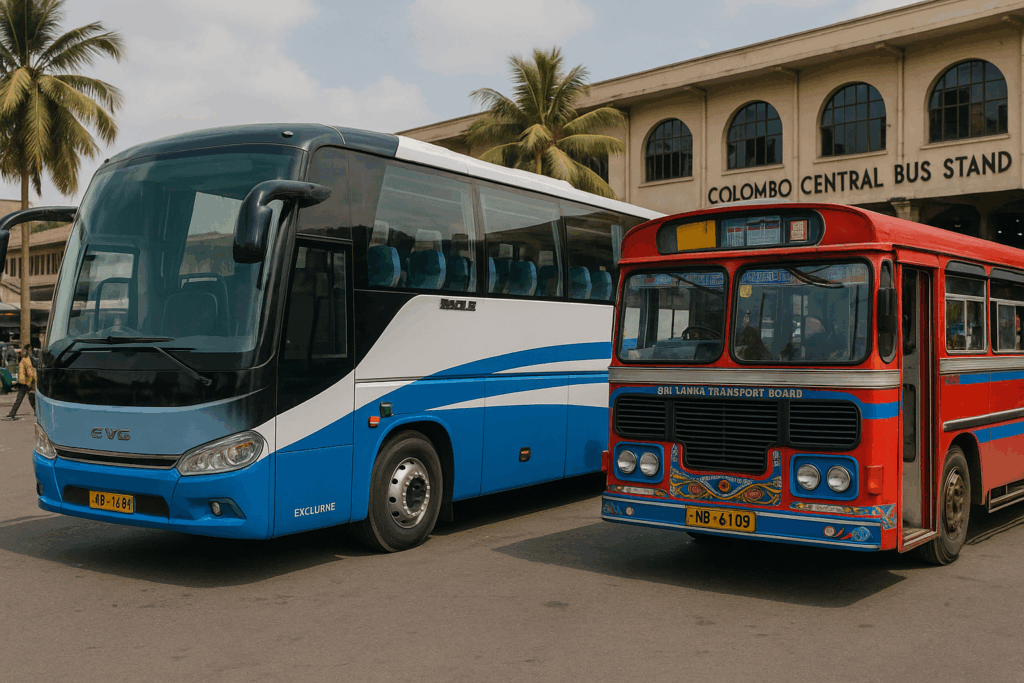

| Merits | Demerits | |
|---|---|---|
| Bus (Express) | Cheap & frequent: Fares are extremely low (even hours-long rides cost only a few hundred yen). Air-conditioned “express” buses between major cities depart frequently.Relatively fast: Depending on the route, sometimes buses get there quicker than trains.Air-conditioned: If you get a seat, you can travel in relative comfort. | Rough driving: Highway buses often drive very aggressively; lots of swerving and high speed, which can cause motion sickness.Overcapacity: Even when full, they’ll cram in more passengers, so if you don’t have a seat you’ll be standing the whole way (very tiring).No fixed schedule: Many buses don’t follow a strict timetable – they often wait to depart until enough passengers board. |
| Bus (Local) | Cheapest & biggest network: Goes everywhere from cities to remote villages. Short rides cost just LKR 20–50 (~¥10–30), super cheap.Local experience: Enjoy the authentic local atmosphere on a crowded bus. Flexible stops: Outside of major terminals, you can hail or hop off buses almost anywhere. | Packed to the brim: Always overcrowded and no AC. You’ll be squashed and exhausted.Safety concerns: Driver manners are often poor and accident risk is high. Rival private buses have even been known to race each other and cause crashes.Unreliable timing: The first bus of the day or rural routes might wait forever until enough passengers gather, making it hard to plan your schedule. |
Buses are the daily lifeline for Sri Lankans, with the most extensive route network of any transport mode. From Colombo and Kandy to tiny villages, there’s virtually nowhere you can’t reach by bus thanks to routes webbing across the island.
Major city-to-city routes have frequent “express” buses, sometimes via highway. For example, between Colombo–Kandy or Colombo–Galle, buses depart one after another from early morning to evening.
The fares are astonishingly cheap – a short hop might be a flat few dozen rupees (literally cents), and even a multi-hour journey typically costs only several dollars
You pay onboard: after you hop on, a conductor will come by, you tell them your destination and pay, and you’ll get a little ticket. On local buses, departure times are often “when the bus fills up” rather than a strict schedule.
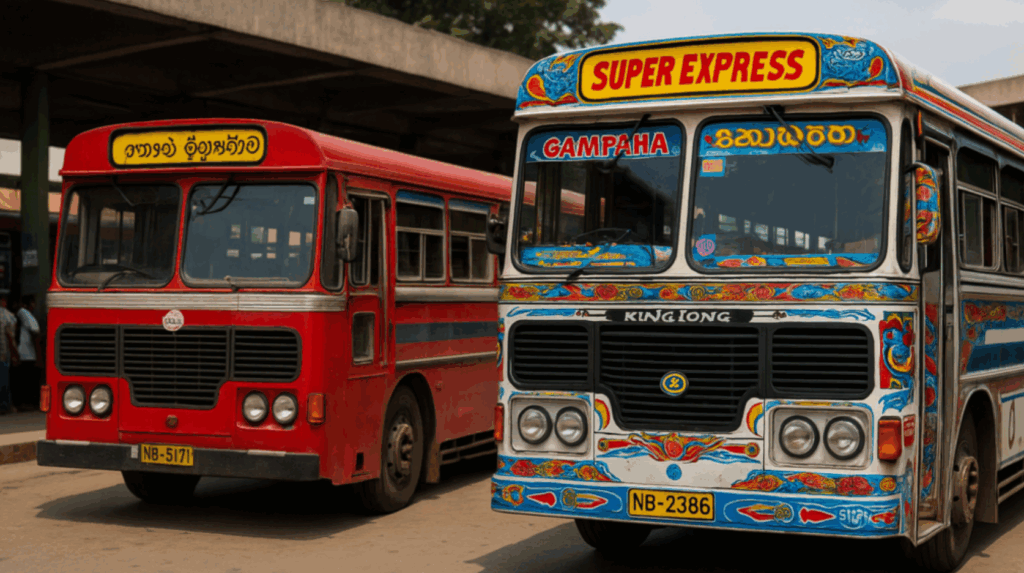

At off-peak times or on rural lines, it’s not uncommon for a bus to sit at the terminal for over an hour before departing… If your itinerary is tight, this “who knows when it leaves” aspect is a big caveat.
Large bus terminals have information counters, but if signage is confusing, ask someone nearby – just say your destination (e.g., “To Kandy?”) and they’ll usually point you to the right area. For local buses, if you plan to get off before the final stop, it’s wise to tell the conductor “I’ll get off at ___” when boarding, so they can let you know when to jump off.
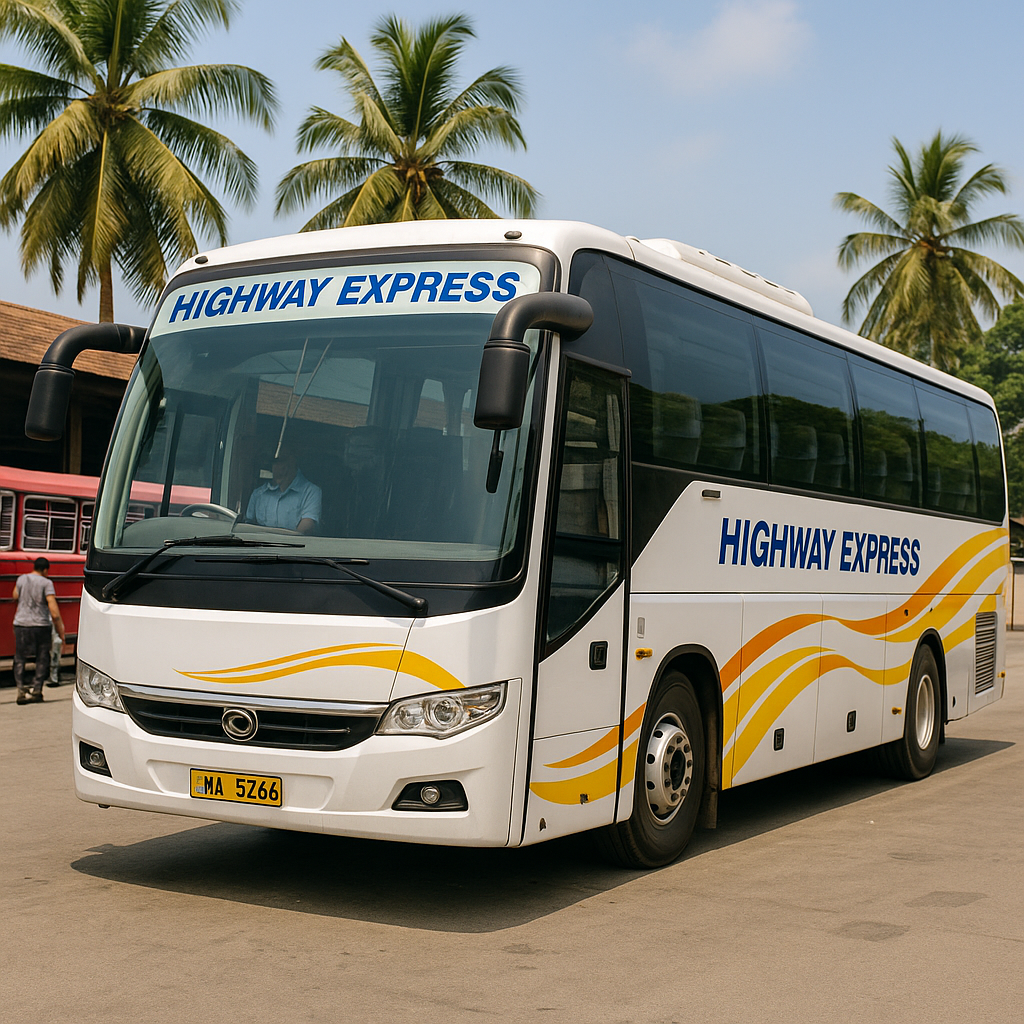

Long-Distance (Air-Con) Buses: These are typically white or blue mid-size coaches, sometimes using the expressway. If you catch one, it’s comparatively comfortable and a bit faster. However, be warned: they’re known for very rough driving. They sometimes overtake other vehicles at breakneck speed and don’t slow down even for curves, giving passengers a rollercoaster-like ride. If you’re not used to it, you might get carsick – best to bring motion sickness pills. Also, even these highway buses will take standing passengers when seats run out, so if you can’t get a seat it becomes exhausting. Before boarding, try asking “Is there a seat available?” If not, it might be wise to wait for the next bus.
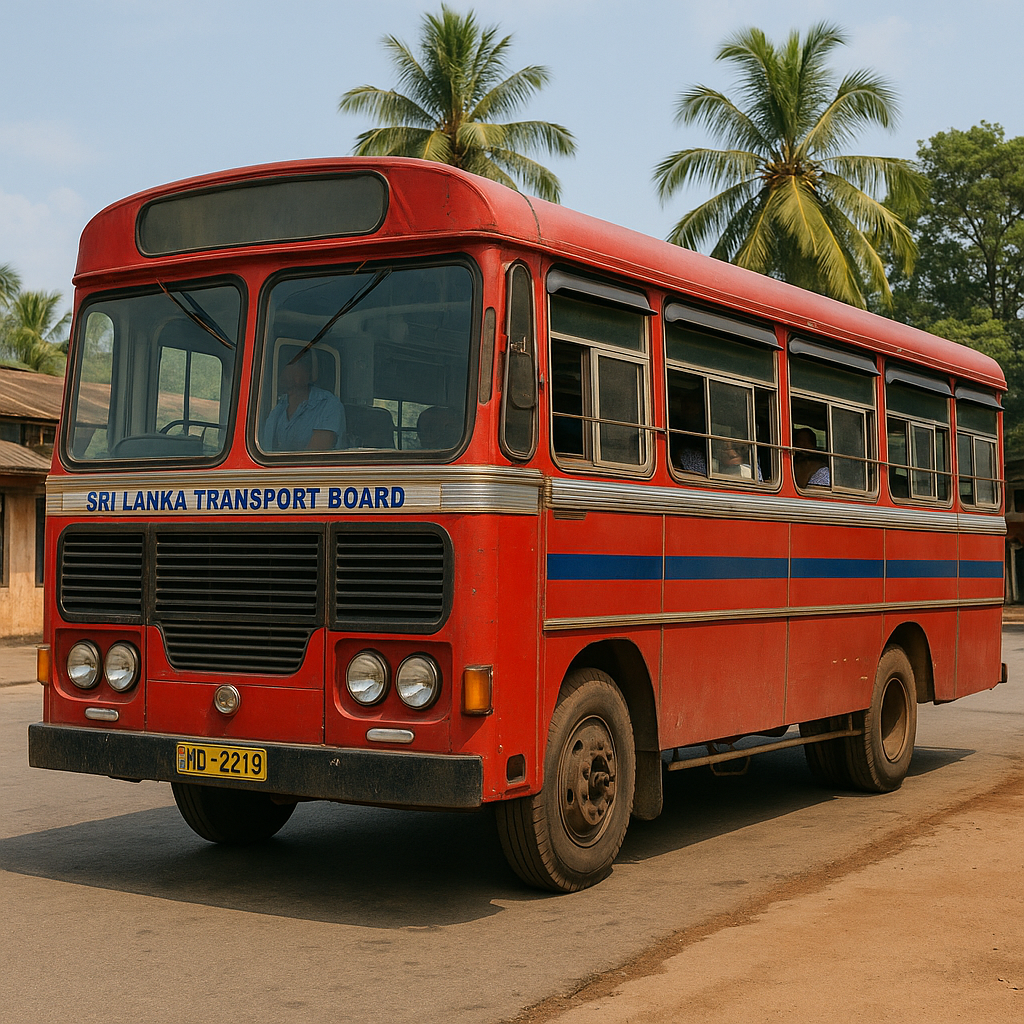

Local Buses: The regular city and village buses are usually red (state-run SLTB) or colorfully decorated (privately run). Many are old and not well-maintained, but they make up for it by running all the time and stopping almost anywhere – like I said, outside of official stops you can flag them down with a wave. However, they are constantly super crowded – it’s normal to stand shoulder-to-shoulder, and there’s only an open window + ceiling fans for ventilation (no AC), so you’ll be covered in road dust and exhaust fumes… comfort is not on the menu. Driving habits are also bad – as mentioned, expect reckless competitive driving and sudden braking non-stop. In fact, there are frequent reports of rival private buses racing each other for passengers and causing accidents, so safety is a genuine concern.
To ride buses more safely, stick to daytime travel, and keep your bags on your lap or at your feet. Often you might have to leave a big backpack near the front by the door – if so, make sure it’s locked and keep all valuables on you.
Also, enjoy the little interactions with local riders around you, but don’t push yourself – if you start feeling unwell, have the flexibility to hop off and rest or catch the next bus.
In summary, traveling by bus in Sri Lanka is “cheap but tough.”
However, the chance to mingle with locals and the raw, live-in-the-moment feeling of the journey are unique rewards. For backpackers looking to save money or add a dash of adventure, buses can be invaluable; conversely, if you’re on a short trip and prioritize efficiency, it’s probably best to avoid them. Match your bus usage to your travel style and make the most of it.
Taking a Tuk-tuk (Three-Wheeler Taxi)
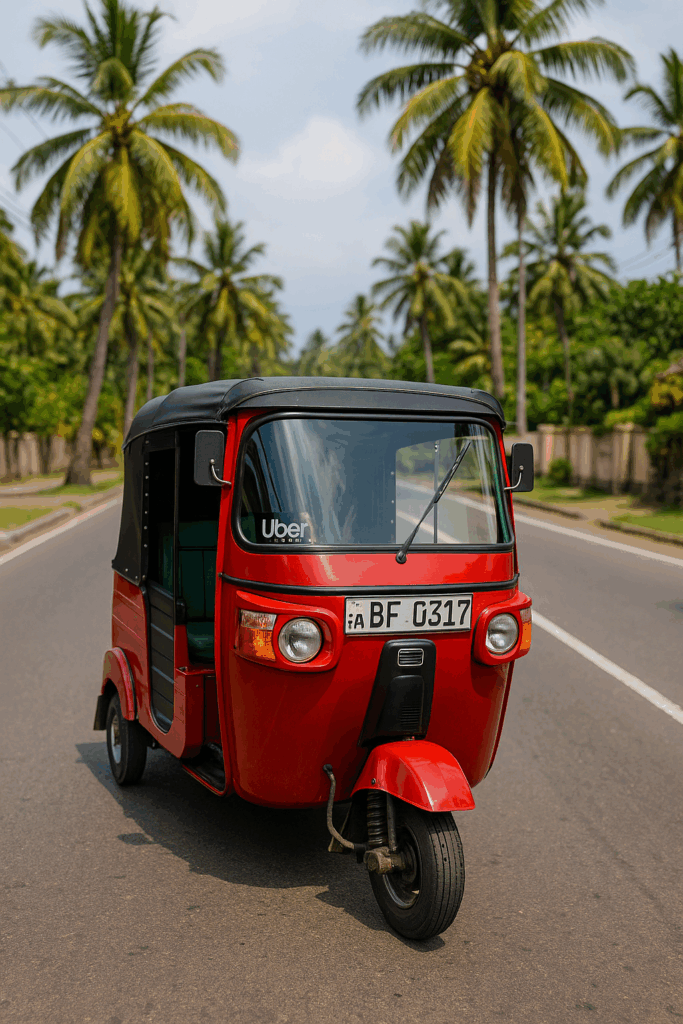

| Merits | Demerits |
|---|---|
| Highly maneuverable: Can weave through traffic and narrow lanes, ideal for short city hops.Quick & cheap: Easy to catch; initial fare around LKR 50 (just ¥30–¥40) – very affordable for short trips.App integration: In cities, apps like PickMe let you see a tuk-tuk’s price upfront and hail one easily. | Beware rip-offs: Tourists often get quoted high prices, so haggling before boarding is a must (Tip: use metered tuk-tuks if available).Not for long distances: They’re slow, can’t carry big luggage, and expose you to rain, sun, and exhaust – zero comfort for long rides.Low safety: Many drivers speed recklessly and lack insurance; accident risk is high. (Japan’s MOFA warns “the safety level of three-wheel taxis is extremely low.”) |
Zipping through city streets with their characteristic putter, tuk-tuks (three-wheeled taxis) are ubiquitous in Sri Lanka. These tiny motor rickshaws (called “three-wheelers” locally) are also common across South Asia. There are tons of them on the road, so usually just raising your hand will have one pull over in seconds. They’re fantastic for short distances of a few kilometers – like going from your hotel to a nearby restaurant, or hopping between sites around town.
In big cities like Colombo, metered tuk-tuks have been increasing. Look for ones with a “Meter” sign on top – those have fare meters. When you get in, make sure the driver resets the meter; you’ll pay per the distance reading. Typical rates are around LKR 50 starting fare, then ~LKR 30–40 per km. For example, a 2–3 km ride would cost roughly LKR 100–150 (¥50–¥75) with a meter, which is standard.
However, elsewhere (smaller towns, tourist spots) the negotiated fare is still the norm. Many tuk-tuks don’t have meters, so you must agree on the price with the driver before you ride.



As a tourist, they’ll usually throw out a pretty high price at first, so definitely haggle!
Ask “How much to go to ___?” and expect the first quote to be high – counter with less than half to feel out a fair price. For example, if they say 200 LKR for a ~2 km trip, you might respond “No, 100?” and negotiate from there.
In my experience, for ~2–3 km, anything over 200 LKR is on the pricey side, and if they say 300+ LKR, it’s likely a rip-off. If the driver won’t budge to a reasonable fare, just politely but firmly decline and walk away. (In touristy areas, the tuk-tuks waiting around tend to ask the most; if that happens, using PickMe/Uber to call a tuk-tuk can be a good alternative.)
You generally pay at the end of the ride. It’s highly recommended to carry plenty of small bills and pay the exact agreed amount. A very common scenario is the driver saying, “Oh, sorry, I don’t have change.”
Often they actually do have change but hope to pocket the difference as a tip. If you only have large bills, you might end up overpaying. Tip/Countermeasure: Prepare small denominations before boarding and hand over the exact fare upon arrival. If a driver still claims “no change,” stand your ground: “Alright, then please go get some.” In most cases they’ll give up and find change. (Generally, you don’t need to tip tuk-tuk drivers, so don’t feel pressured into it.)
Safety-wise, remember that tuk-tuks carry high accident risk. They’re small and unstable (only three wheels), and have no doors or seatbelts – it’s an open vehicle. With a daredevil driver, it can become a heart-pounding ride, and if an accident happens, an uninsured tuk-tuk offers no compensation. Japan’s foreign ministry explicitly notes the “extremely low” safety of three-wheel taxis, so it’s best to avoid using them at night or for long distances. (Especially at night, some tuk-tuk drivers may drive under the influence – another reason for caution.)
That said, for short trips around town, a tuk-tuk’s agility and convenience are unmatched. They can thread through traffic jams and squeeze down narrow alleys, even delivering you right to a tucked-away guesthouse’s doorstep. For covering that “last mile,” they’re arguably the strongest option.
Riding in a breezy, open-air tuk-tuk can actually feel great – wind in your face – and chatting with a friendly driver can really boost your mood and sense of adventure. Definitely try it at least once to enjoy the exotic, up-close experience. Just remember don’t overdo it – stick to short distances or when appropriate. For longer journeys or if you have lots of bags, a car or charter is the wiser (and safer) choice.
Conclusion: For Safe & Comfortable Travel in Sri Lanka, Taxi Charters Come Out on Top!
We’ve compared all the transportation options for getting around Sri Lanka, looking at comfort, safety, cost, and speed. Below is a summary of the pros and cons of each major mode:
| Mode of Transport | Merits | Demerits |
|---|---|---|
| Taxi Charter (Private car + driver) | Outstanding efficiency: Go anywhere on your own schedule, minimizing wasted time.Comfort & safety: A private air-conditioned car means stress-free travel and secure luggage storage.Language support: Services for foreign tourists (e.g. Japanese support) offer extra peace of mind for first-timers. | Higher cost: Costs more than other options (though splitting with a group lowers per-person cost).(Need to choose a reliable company/driver.) |
| Train | Ultra-low cost: Even long journeys only cost a few hundred yen.Scenic routes: Many breathtaking routes (mountains, coast) where the journey itself is a sightseeing experience.Upper classes available: 1st/2nd class reserved seats provide relatively comfortable rides. | Unpredictable timing: Trains are chronically delayed, and travel takes a long time.Crowded & tiring: 3rd class is always full and has hard seats, very exhausting for long durations. Theft risk: Reports of pickpocketing on packed trains, so caution is needed. |
| Bus (Express) Highway/long-distance | Cheap & frequent: Very low fares (even multi-hour rides for a few hundred yen). AC express buses run frequently on main routes.Fairly fast: Sometimes faster than the train for the same route.Air-conditioned: If you have a seat, you can ride in relative comfort. | Reckless driving: Highway bus drivers tend to speed and sway; can cause motion sickness.Overcrowding: Buses often cram in standing passengers when seats are full, making travel tiring if you can’t sit.Loose schedule: Many buses depart only after enough passengers board, rather than fixed times. |
| Bus (Local) City/village lines | Cheapest, widest reach: Goes virtually everywhere, city to countryside. Short hops cost only 10–30 yen, incredibly cheap.Authentic experience: Immerse yourself in local life and atmosphere by riding with locals.Flexible stops: You can flag them down or get off almost anywhere, not just official stops. | Always packed: Generally standing-room-only and no AC; you’ll be squished and exhausted.Safety issues: Poor driving habits lead to higher accident risk (racing buses, sudden stops, etc.).Uncertain departures: Especially first/last buses of the day can wait indefinitely to fill up, complicating schedule planning. |
| Tuk-tuk Three-wheeler taxi | Great agility: Can zip through traffic and narrow lanes – perfect for short city trips.Easy & cheap: Hail one quickly; starting fare ~¥30–¥40, very affordable for quick rides.App-ready: In cities, apps (PickMe/Uber) can give upfront fares and quick pickups. | Haggling needed: Tourists often face high initial quotes – always negotiate before riding (or use metered/app tuk-tuks).Not for distance: Slow, can’t carry large luggage, and exposure to elements make it unsuitable for long trips.Low safety: Many drivers speed and vehicles lack safety features. (MOFA: “very low safety level” warning). |
| Uber/PickMe Ride-hailing apps | Upfront pricing: Know your fare ahead of time and it’s recorded digitally, which is reassuring.Comfort: AC cars with seat belts, plus room for luggage – essentially like a taxi ride.On-demand: Call a car via smartphone, no price negotiations. App includes safety features and support if issues arise. | City-limited: Mainly available in Colombo, Kandy, etc. – not usable in many rural tourist spots.Costs (relatively) more: Still cheap overall, but pricier than buses. Traffic delays can also mean longer, costlier rides (especially with PickMe’s time-based component).Needs internet: Requires a data connection (local SIM or pocket Wi-Fi), and account setup (PickMe usually needs a local number). |
| Domestic Flights (Seaplane, etc.) | Fastest travel: Can cover long distances in ~30–60 minutes, dramatically cutting travel time.Amazing views: Enjoy scenic aerial views – the flight itself feels like an attraction.Extends reach: From Colombo, flights serve 16+ major tourist areas, allowing you to access far-off spots (8+ hour drives) in one hop. | High cost: Fares are roughly $50–150 one-way, quite expensive.Weather dependent: Bad weather often causes delays or cancellations, posing schedule risks.Limited service: Only flies to certain cities/attractions, and you still need transport to/from the airfields (e.g., lakes for seaplanes). |
If you’re looking for rock-bottom cost or a sense of adventure, trains and buses have their appeal. However, from the perspective of time savings and guaranteed safety, they do come with uncertainties. On the other hand, taxi charters, while requiring a higher budget, excel across the board in comfort, safety, and efficiency.
By reducing transportation stress, you can channel more energy into sightseeing – as a result, your overall trip satisfaction will be much higher.
Especially for a first-time trip to Sri Lanka, or if you want to see a lot in a short time, it’s absolutely worth spending a bit more to hire a car with a driver. With a reputable service tailored to international travelers, there’s no language barrier, and a knowledgeable driver will support your entire itinerary – giving even independent travelers peace of mind akin to a guided tour.
Finally, here are the key points in bullet form:
- Public transport (trains & buses): Cheap, but not timely or the safest. Particularly on a short trip, beware that getting around can eat up more time than expected.
- Tuk-tuks: Convenient for city hops, but negotiation is mandatory and accident risk is high. Limit them to short distances, and avoid using them at night or for long hauls.
- Uber/PickMe apps: Very handy in cities, with clear pricing and easy booking. But they might not work in rural areas – ensure you have mobile internet (and ideally a local SIM) set up beforehand.
- Self-driving (rental car/motorbike): Not recommended. The driving environment is vastly different from home and extremely dangerous. Plus, you can’t legally drive with just an International Permit (the local licensing process is cumbersome).
- Taxi charter: The mode that wins on comfort, safety, and efficiency. With a private car and driver, you can sightsee stress-free, and if you’re in a group, the per-person cost isn’t bad. Choosing a reliable company with Japanese/English support makes it even more secure.
Your travel days in Sri Lanka are precious. If you wear yourself out struggling with transportation, it defeats the purpose. So choose the transportation methods that match your priorities, and enjoy Sri Lanka’s charms to the fullest. Here’s wishing that your Sri Lanka trip is safe, hassle-free, and truly memorable!
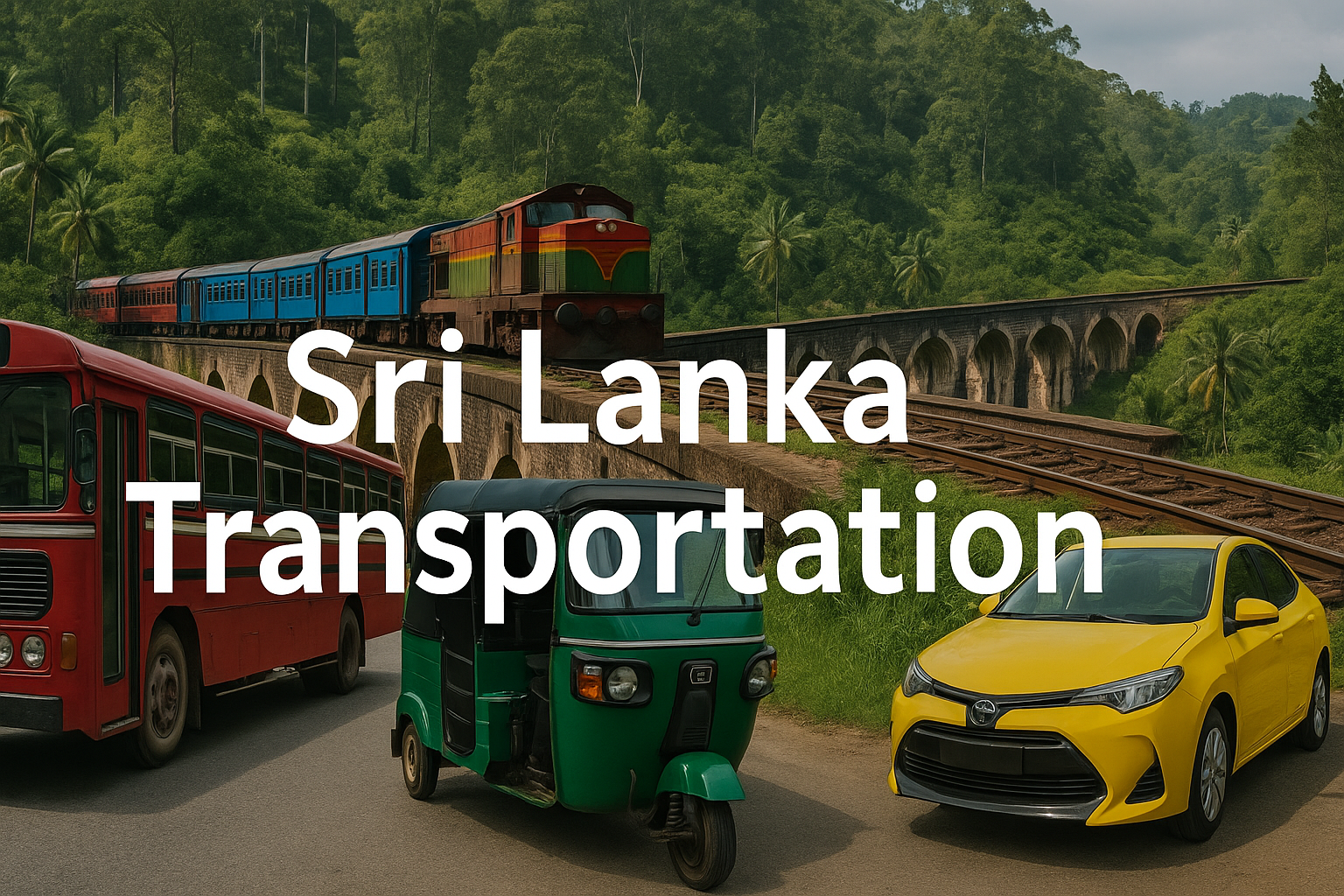
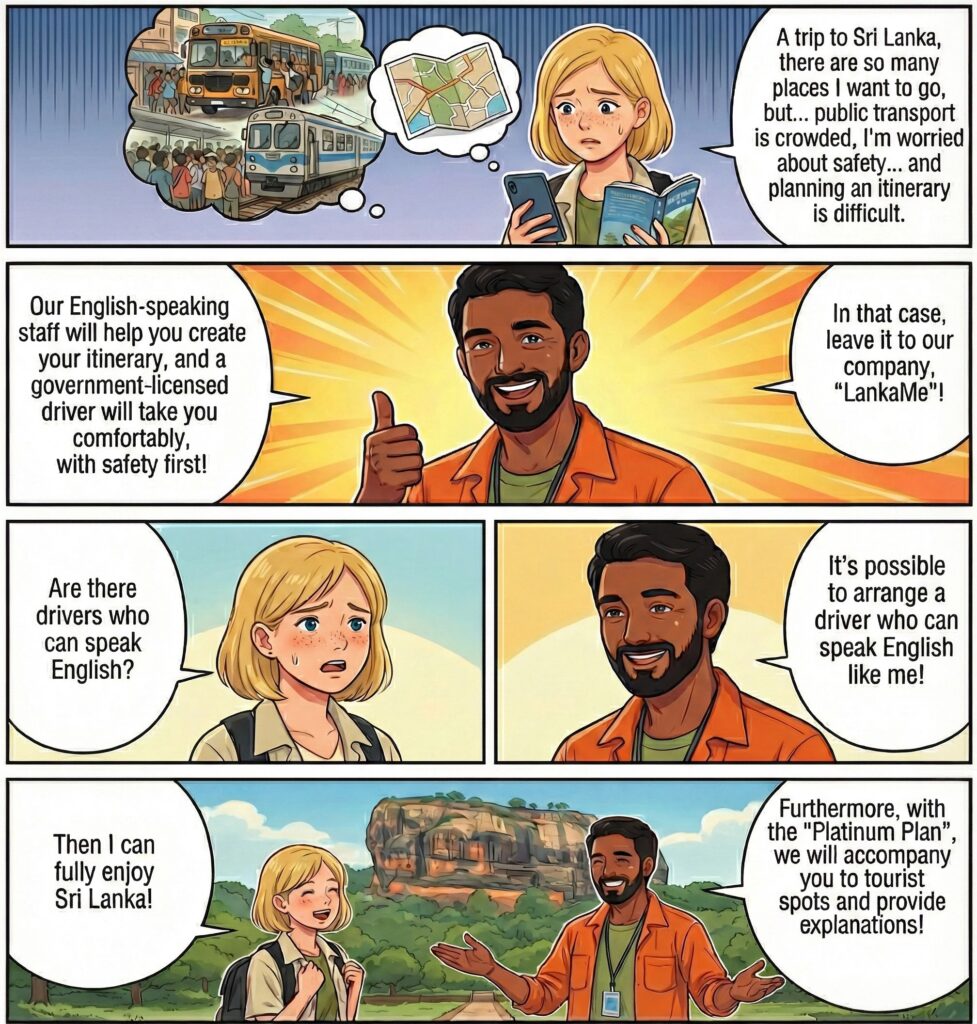
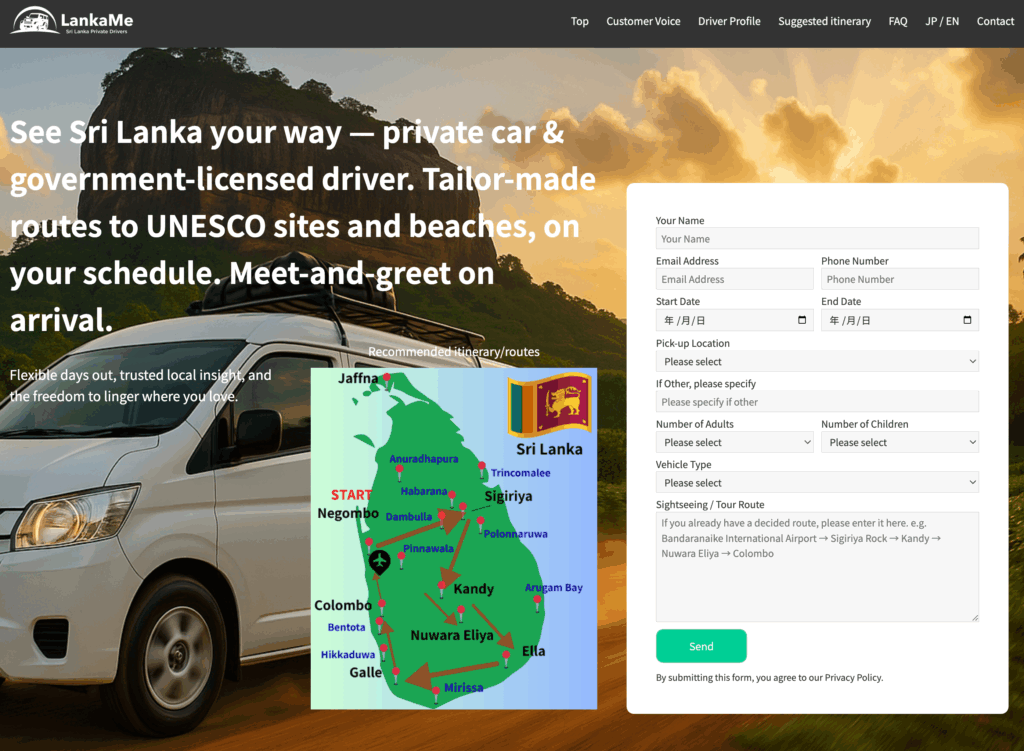
コメント